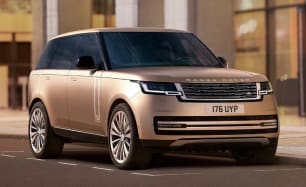The cabin of the new Prado delivers simple practicality. As it's a base grade, you don't get luxurious features like heated seats but you do get a functional space which will work for lots of families. Whether it's the all-weather floor mats, ample head- and legroom or easy-to-use technology.
Each row enjoys lots of space and despite it appearing narrow inside, you don't jostle your neighbour's elbow. The tightly woven and speckled fabric upholstery looks more durable than the predecessors velour-like trim.
Seat comfort is excellent in both rows due to the thick padding and side bolsters. The manual front seats are easy to set to a comfy position and while they lack adjustable lumbar support you won't be fatigued on a long journey.
Amenities are decent for a base grade with each row enjoying a couple of cupholders, drink holders, USB-C ports and a single 12-volt socket.
The front gets a third USB-C port for media access and an HDMI port. There's a 220-volt domestic outlet in the boot for larger appliance charging. The front row gets dual-zone climate control.
Individual storage is what you'd expect with a glove box that can hold an owner's manual and some tissues, a large middle console and a dedicated phone cradle.
You miss out on any 'clever' storage, though, like a sunglasses holder, drivers' knee cubby or shelving in the dashboard.
In the rear the storage burden is shouldered by two seatback map pockets and small storage bins.
My eight-year old enjoyed the back seat and the low window sills afford him a great view. Access is easy due to the side steps and multiple grab handles. You might still be helping in young children, though.
The boot is the biggest change as the side-hinged door has been replaced by a top-hinged tailgate. This is far more practical for car parks and small garages but you now notice the lack of powered assistance. The rear lid isn't particularly heavy but can be cumbersome to open when you have your hands full.
The boot offers a large 954L storage capacity behind the second row, expanding to a generous 1895 litres with all seats folded. But the level loading space has been raised to accommodate the 48-volt battery. This just means you'll need more lifting power to get bigger items in and out.
The updated 12.3-inch multimedia display looks great and the touchscreen is super responsive. Worth noting it runs the Lexus operating system which means menus are logically laid out and it's easy to use.
The 7.0-inch digital instrument cluster offers plenty of customisations and the information is easy to read. The wireless Apple CarPlay and Android Auto are easy to connect to but you have built-in sat nav should you need it.






































